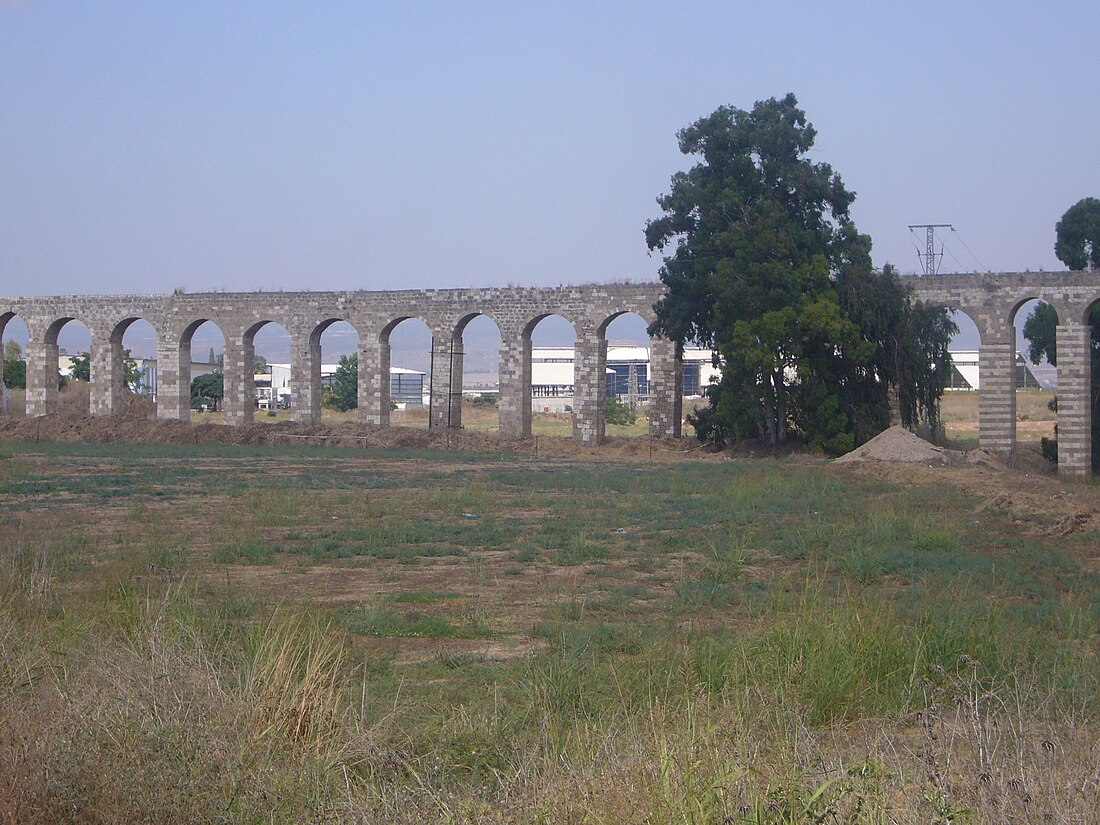Top Qs
Timeline
Chat
Perspective
Al-Sumayriyya
Former village in Acre, Mandatory Palestine From Wikipedia, the free encyclopedia
Remove ads
Al-Sumayriyya (Arabic: السُميريه, Katasir in Canaanite times, Someleria during Crusader rule), was a Palestinian village located six kilometers north of Acre that was depopulated after it was captured by the Israel Defense Forces during the 1948 Arab-Israeli War.[7] The ruins of the village are today in the outskirts of the Israeli moshav of Regba.
Remove ads
History
Summarize
Perspective


Tall al-Sumayriyya contains carved stones, a mosaic floor, tombs, columns, and stone capitals. Khirbat Abu 'Ataba has an Islamic shrine and ceramic fragments.[8]
In the Crusader era, it was mentioned in 1277 under the name of Somelaria.[9] At the time, the village belonged to the Templars.[10] In the hudna of 1283 between Al Mansur Qalawun and the Crusaders, Al-Sumayriyya was still under Crusader rule[11][12] while in 1291 it had come under Mamluk control.[13]
A building with a court-yard, measuring 60,5 by 57 meters, dating from the Crusader era, has been noted in the village, and a 13th-century glass-factory has been excavated.[10]
Ottoman era
It was mentioned in the Ottoman defter for the year 1555-6, named Summayriyah, located in the Nahiya of Akka of the Liwa of Safad, and with its land designated as Sahi land, that is, land belonging to the Sultan.[14]
In 1738 Richard Pococke passed by the place, which he called Semmars. He thought the name came from "St. Mary's", and noted the remains of a wall of hewn stone, which he thought had belonged to a convent.[15]
A map by Pierre Jacotin from Napoleon's invasion of 1799 showed the place, named as El Esmerieh.[16]
In 1875 Victor Guérin found the village had 400 Muslim inhabitants.[17] In 1881, the PEF's Survey of Western Palestine described the place as a village of "mud and stone houses, containing about 200 [..] Moslems, situated on the plain, surrounded by a few clumps of olives and figs and arable land; two or three cisterns are in the village, the aqueduct near brings good water."[18]
A population list from about 1887 showed the village to have about 270 inhabitants; all Muslims.[19]
British Mandate era
In the 1922 census of Palestine conducted by the British Mandate authorities Semariyeh had a population of 307; 300 Muslims and 7 Christians,[20] where all the Christians were Maronite.[21] This had increased in the 1931 census to 392, 390 Muslims, 1 Christian and 1 Jew, in a total of 92 houses.[22]
Al-Sumayriyya had an elementary school for boys, which was founded in 1943. In 1945, it had an enrollment of 60 students. One mosque which remains.[8]
In 1944/1945 the village had a population of 760 Muslims,[4] with a total of 8,542 dunams of land.[3] Of this, 6,854 dunams were allocated to grain crops; 354 dunams were irrigated or planted with orchards,[23] while 28 dunams were built-up (urban) land.[24]
1948, and aftermath
At the beginning of 1945, al-Sumayriyya's 760 inhabitants were all Arab Muslims. The inhabitants fled as a result of the 14 May 1948 assault on the village by the Carmeli Brigade during Operation Ben-Ami, one day before the official outbreak of the 1948 Arab-Israeli War.[7] The village - along with neighbouring al-Bassa and al-Zib which were also captured in the offensive - was subsequently destroyed, except its mosque.[25]
Lohamei HaGeta'ot and Shomrat are both on village land.[6] Morris writes that Bustan HaGalil was built near its site,[26] however, Khalidi writes that Bustan HaGalil is on the land of Al-Manshiyya.[27] Shavey Tziyon and Regba are close to the northern borders of Al-Sumayriyya, but were established on land that used to belong to Mazra'a.[6]
Remove ads
See also
References
Bibliography
External links
Wikiwand - on
Seamless Wikipedia browsing. On steroids.
Remove ads






